“Just go,” Sheila told me. It was my 40th birthday. “Ride, explore, think. Take a week, maybe more. Call once in a while and tell me where you are.” She didn’t have to tell me twice. (Sorry, she’s mine. Her sister’s married, too.)
I’ve been “just going” since I was a kid, and Sheila knew it had been too long since my last adventure. I packed my Honda ST1300, kissed her and our daughter Summer, petted the dogs and hit the road solo.
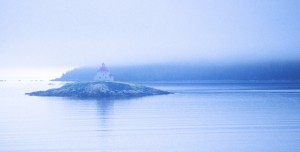
Two hundred backroad miles later, I arrived in torrential rain at the ferry terminal in Portland, Maine. The Scotia Prince is both a floating garage for 200 vehicles and a hotel/ casino for 1,000 passengers. A fine buffet was available, so I grazed before retiring to my cabin to review the motorcycle tour guide to Nova Scotia. There was plenty of time to read since the overnight cruise would take 11 hours.
Next morning at 8 a.m. (Atlantic time) I disembarked in Yarmouth and called Sheila to say, “I’m in Nova Scotia.” Our ride there in 1993 had been a life-shaping event, our first week-long motorcycle tour. Feeling adventuresome and a bit nostalgic, I returned to Nova Scotia to commune with nature, support the seafood trade and enjoy my birthday gift—the freedom to ride.
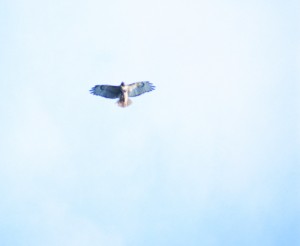
I headed south through the fog along the Lighthouse Route, one of Nova Scotia’s 10 scenic travel ways. As an admirer of birds, I made my first destination The Hawk Beach on Cape Sable. Many migratory birds gather here, the last place to feed and rest before a long flight over open ocean.
Fog hid the ocean along the coastal route to Shelburne, but the ride was eerily scenic. Just as my stomach began signaling lunch, a solution appeared: “Sea Dog Saloon—Motorcyclists Welcome.” The day’s delivery of steamer clams hadn’t arrived yet, so I settled for the chowder and enjoyed a great view of the harbor.
Heading up the coast, I came upon a cable-drawn ferry crossing the inlet at LaHave. For five dollars, my bike and I were delivered to East LaHave, cutting the distance to Lunenburg. The Old Town of Lunenburg was a visual feast, even in a downpour.
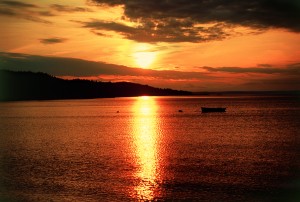
The rain let up as I approached Halifax and the Mumford Bed & Breakfast. This rider-friendly B&B is managed by English expatriates June and Mark Splendoe. (Sky the dog, rescued from the local animal shelter, serves as welcoming committee.) We had tea, then I enjoyed one of Mark’s excellent homebrews. With my bike parked, I ventured out for a night on the town.
I remembered mussels and lobster on the waterfront from the ’93 trip, and easily found the same spot: Murphy’s. Over dinner I learned from locals that residents of Halifax are known as “Haligonians,” though no one could say why.
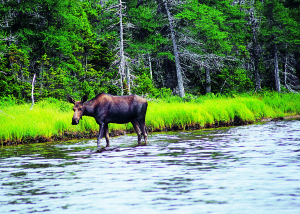
Following a good night’s rest and a breakfast feast, I ventured east along the Marine Drive. While the Lighthouse Route had been quaint and touristy, the Marine Drive felt overlooked. The scenery was great and nature trails were signposted, but the road was rough for long stretches. Some sections were downright hazardous with deep ruts home to weeds several inches high.
A sign indicated a lighthouse a couple clicks down a dirt road and I investigated. Even at slow speed, the motor’s whine spooked a great blue heron, then another, and another. There were six in all, more than I’d ever seen together.
The road stopped at Port Bickerton lighthouse, now a museum. Lighthouse enthusiasts across the province volunteer to keep historic buildings like this one in good repair. As with each of 162 lighthouses in Nova Scotia, this light’s automated signal pattern is unique: four seconds on, four seconds off. A short network of hiking trails led me to a rocky cove where cormorants dove beneath the choppy water.

I found another cable ferry at Country Harbour. This channel was far wider than LaHave so I had time to learn how a cable ferry works. Dean Jack, engineer of the Stormont, explained that cable ferries in Nova Scotia carry up to 12 vehicles. A four-cylinder, 85-horsepower diesel motor powers a hydraulic pump that turns two bullwheels. Traction drive moves the boat along a stationary cable spanning the channel.
Farther along, the Marine Drive took a sharp left. I missed the turn. Just up the road there was a turnaround but a boardwalk into the pines convinced me to park. A short walk put me on the empty, unspoiled beach of Tor Bay. A group of long-tailed ducks chattered as terns dive-bombed for fish.
At Queensport, my B&B overlooked the light at Phillips Harbour in a picture-postcard scene. Muskrats played in a freshwater pond as a belted kingfisher perched, waiting for a meal to swim by. The quiet was remarkable, with water sloshing gently on the rocks and a gull’s distant cry all I could hear.
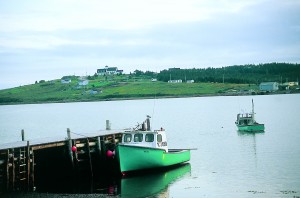
Conveniently, the only restaurant for 20 kilometers was a 10-minute walk. I supped on bratwurst and enjoyed conversation with Lloyd and Kay, who rode a Harley dresser from the eastern shore of Maryland.
Next morning beyond Queensport, the Chedabucto Bay scenic lookout featured a monument to Henry St. Clair. Some historians believe the Scottish earl discovered the New World in this bay in 1398.
Since Cape Breton Island was my goal that day, I left the rutted shore road in favor of the smoother inland two-lane. Quickly I was reminded of Nova Scotia’s connection to the sea. An oncoming convoy of 10-wheeler dump trucks trailed a vile stench of fish. With no place to retreat, I breathed through my mouth, cranked the throttle, and sped toward fish-free air.
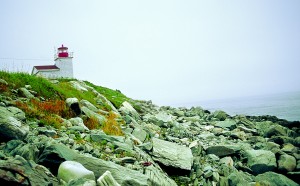
On Canso Causeway (the world’s deepest) strong crosswinds welcomed me to Cape Breton. I joined the Bras d’Or Lakes Scenic Drive and toured the southern coast of a great inland sea. In an open stretch, a bald eagle winged up the shore. I paced the majestic bird, staying alongside until it abruptly reversed course, perhaps eyeing lunch below the lake’s surface.
At East Bay, the drive cut back along the lake’s northern shore. A cable ferry spanned Little Narrows, aptly named since it was only 300 feet across. The engineer suggested I keep the motor running.
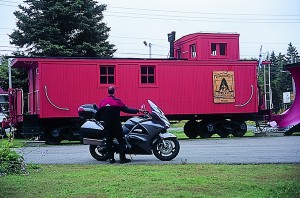
When my stomach signaled dinner, the Lobster Galley at Saint Ann’s Gut served up two pounds of my favorite crustacean. A father and teenaged daughter from Chicago dined at the next table. On vacation in the Maritimes, they decided to try lobsters. “Dad, how do you eat one of these?” He wasn’t sure. To the uninitiated, it can be a mystery. I offered a quick lesson and set them on a path to gastronomic bliss.
At first light I left Baddeck heading north on the Cabot Trail. In ’93, we rode the Cabot Trail clockwise; this trip I chose counterclockwise. Sweepers through dense woods started my run, but the sky soon opened up to the sea. The road ascended Cape Smokey in smooth, tight curves. I savored a joyride with no other vehicles in sight.
Near Broad Cove I entered the Cape Breton Highlands National Park where I hoped to see moose. A ranger offered pointers: “You might see several moose in the road five minutes from here. You might spend a week in the forest and never see one.” Armed with a map and early morning optimism, I rode on.
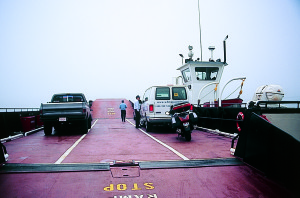
A hike down a wilderness trail landed me at Benjies Lake. I sat and waited. Soon a cow moose emerged from the woods across the lake, perhaps 200 yards away. She submerged her ample snoot to harvest aquatic plants. I could hear her chew, snort and blow bubbles in the water. For over an hour this enormous creature ate her way closer. Downwind and motionless I had stayed unnoticed, then suddenly her large ears trained on me like furry brown antennas. The camera’s in-focus distance told the tale: 15 feet. My heart pounded. Perhaps sensing no threat, the moose continued feeding at close range. After a while, she vanished into the woods.
Still buzzing from the encounter, I continued riding the Cabot Trail. Stopping for a view of the Gulf of St. Lawrence, I spied a pod of pilot whales playing alongside a whale watch boat. Overhead a red-tailed hawk banked hard then swooped down the cliffside below.
South of the national park, I called it a day in Margaree Harbour. While I enjoyed my fish dinner, eagles soared over the harbor seeking theirs. Before bed I called Sheila to say, “I’m in Cape Breton.”
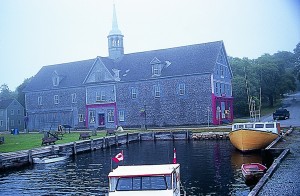
Morning brought rain for my ride on the Ceilidh (say “KAY-lee”) Trail. The shore road was smooth and the view spectacular, but gusting winds made keeping a steady pace difficult. St. George’s Bay looked angry and I concluded that Cape Breton’s rewards must be earned.
At the causeway I took a much-needed break and called June at the Mumford B&B about a room; she called me a “boomerang guest.” On the way back to Halifax, I turned inland on Route 289 and found the smoothest ribbon of asphalt of my entire trip. With rain letting up as I rode east, it was dry as well. Paralleling the Stewiacke River, I zipped through dense forest, empty pasturelands, and a handful of don’t-blink towns.
By Halifax the weather had cleared. I dined on mussels and stout on the waterfront, then stopped at the clock tower by the ferry terminal where motorcyclists gather on Thursday evenings. About 20 bikes had already assembled: a well-worn but well-loved Honda GL1100; a spanking-new Ducati Monster; two BMW dual-sports (one boxer, one thumper); a Harley Low Rider, factory quiet and gleaming. Riders traded stories as we admired each other’s machines.
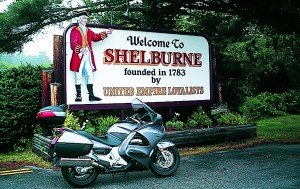
Next morning I backtracked on the Lighthouse Route to Kejimkujik National Park Seaside Adjunct. The five-mile loop trail meandered through coastal wilderness. With few hikers out that morning, I enjoyed the company of shore birds along my walk. Riding back to Yar-mouth, Route 203 traversed pristine wilderness along the Roseway River and its network of lakes.
For the return trip to Maine I chose the Cat, the fastest car ferry in North America. Fast is good, as we all know. With room for 900 passengers and 240 vehicles, the Cat cruised at 45 knots (52 mph) and reached Bar Harbor less than three hours after leaving Yarmouth.
The next day—my ninth on the road—I pulled into my driveway to heartfelt greetings from my wife, daughter and dogs.
With the freedom to “just go” now and then, coming home is a thrill all its own.
Getting There and Back
Nova Scotia is not an island, but it’s most conveniently accessed from the United States by ferry. From Portland, Maine, the Scotia Prince cruises to Yarmouth, Nova Scotia, overnight.
(800) 845-4073
www.scotiaprince.com
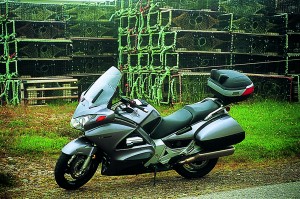
Returning on the Scotia Prince wastes a day, so consider cruising to Bar Harbor, Maine, aboard the Cat, which makes the crossing in under three hours.
(888) 249-7245
www.catferry.com
Nova Scotia Tourism and Culture
Box 456
Halifax, Nova Scotia B3J 2R5
(800) 565-0000
(This article The Nature of Nova Scotia: Exploring Canada’s Ocean Playground. was published in the June 2004 issue of Rider magazine.)

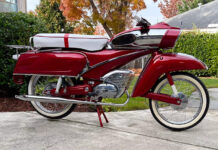
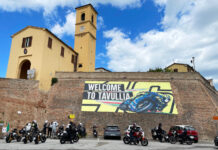


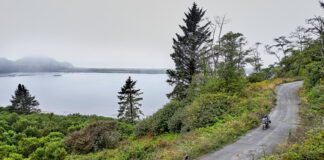
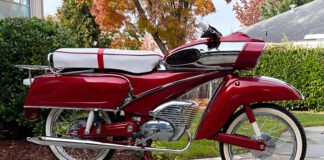

Loved every minute of my trips to Nova Scotia and Prince Edward Island. If you ever get the chance, go!